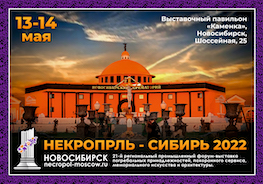BY DENNIS PERKINS

Flamenco dancer Lindsey Bourasso stars in a multimedia piece about grief, “El Lobo y La Paloma (The Wolf and the Dove).” Submitted photo
Grief is all around us these days. With nearly 200,000 Americans dead from a perniciously contagious virus, the number of friends and loved ones in mourning is incalculable. For those of us still walking, grieving is even harder when that health crisis suspends our daily lives, making the normal processing of loss and sorrow even more difficult.
Now imagine you’re in prison.
Apart from the daily pain of incarceration, where fear and guilt are the unwelcome daily companions to the base-level disquiet all Americans are living through. Even more so than the rest of us, the incarcerated have little chance for escape. (Figuratively speaking, of course.) But, for a Maine dancer and the moviemaker who filmed her grief-themed dance performance, escape has come from a most unlikely place.
We don’t deal well with grief in our culture and society, and it’s even worse in a prison system “where there’s more grief and even less access to resources,” said Portland’s Lindsey Bourassa, whose multimedia dance performance “El Lobo y La Paloma (The Wolf and the Dove)” was filmed in 2017-18 by producer/directors David Camlin and Scott Sutherland and recently picked up by Edovo, a company dedicated to bringing educational, arts, and communication projects to people in the nation’s prisons and jails. It’s also available for rent or purchase through Vimeo for those on the outside.
Inspired by a poem written by Bourassa’s father about the long-ago death of her mother, “El Lobo y La Poloma” sees Bourassa and fellow flamenco dancer Megan Keogh physically manifesting the grieving process over projected paintings by Khosro Berahmandi and a striking performance by singer Talal Alzefiri and musician Thomas Kovacevic. Incorporating narration of her father’s poem and her own on the subject of death and loss, the film is simultaneously passionate, theatrical, and – for those of us not versed in the art of dance – mysterious. Even opaque.
It’s resonated with incarcerated viewers to an extent that even Bourassa and Camlin have found surprising. “As an artist, you’re always looking for ways to bring your work to different populations, to make it accessible there,” says Bourassa. “Flamenco is a really great art form for telling stories, because, while it’s very technical, its goal is emotional. Sometimes I feel it touches people in a way that maybe other forms that are less outwardly emotional can’t.”
While “El Lobo y La Poloma” wasn’t conceived with incarcerated audiences in mind, both Camlin and Bourassa tout Edovo’s approach to bringing uplifting, thought-provoking art behind prison walls where such experiences are perpetually scarce. “Edovo’s whole concept is education-based learning experience,” explains Camlin, who splits his professional life between Maine and Michigan. “From muffin recipes to GED tracks to skill training, it’s all about personal development. Our goal was to develop a learning component to go along with the film.”
Camlin notes that he and Bourassa went through a learning process, as well. “We initially thought about bringing this to a group setting, like we have at public screenings of the film, where I’ve witnessed some of the best conversations I’ve ever seen. But for a lot of incarcerated people, there isn’t a person they can trust enough to show their emotions. So we tailored it to an individual experience.”
Introduced to Edovo by the PMA’s Jon Courtney (whose work promoting prison education and arts we’ve profiled at Indie Film), Bourassa and Camlin – alongside Hospice of Southern Maine counselor Carol Schonberg – have created an immersive experience about processing grief that has clearly struck a chord. They started to receive positive feedback from incarcerated viewers within days of the film’s Edovo release, and the pair say the anonymous responses have been sometimes overwhelming. (One unedited response reads, “I didn’t take my losses well and this shows me a way to turn pain into art,” while another states plainly, “Makes me wanna fix my ways so im remebered by something impressive.”)
For a work so personal, the success of “El Lobo y La Paloma” in touching people in need has been humbling for Bourassa. Noting that her own process has been one of realizing that joy and creativity are as much a part of grieving as sadness, Bourassa says, “The feedback is so helpful in asking, ‘What does this work do? How is this helpful?’ That’s what struck me — how they want to leave a legacy, want to be remembered for something really wonderful.”
“El Lobo y La Paloma” can be seen on-demand at Vimeo. For more of Lindsey Bourassa’s dance and David Camlin’s filmmaking work, check out their respective websites, bourassadance.com and 7cylinders.com.
Proactive Grieving Post 1: Taking Emotional Risks In Grief Processing…learning the dance
https://heartlightstudios.blog/2019/10/02/proactive-grieving-post-1-taking-emotional-risks-in-grief-...










